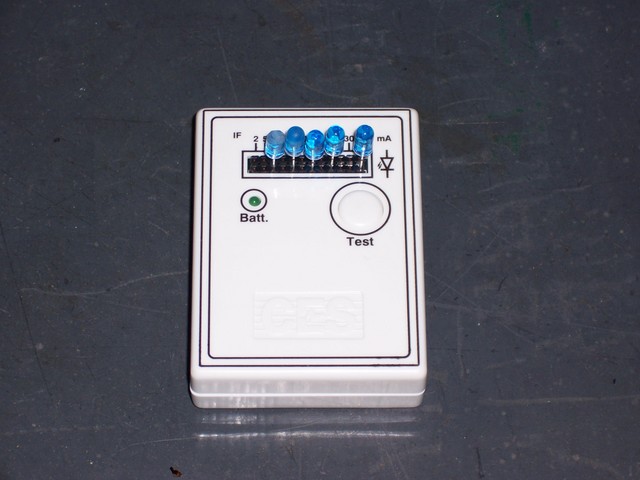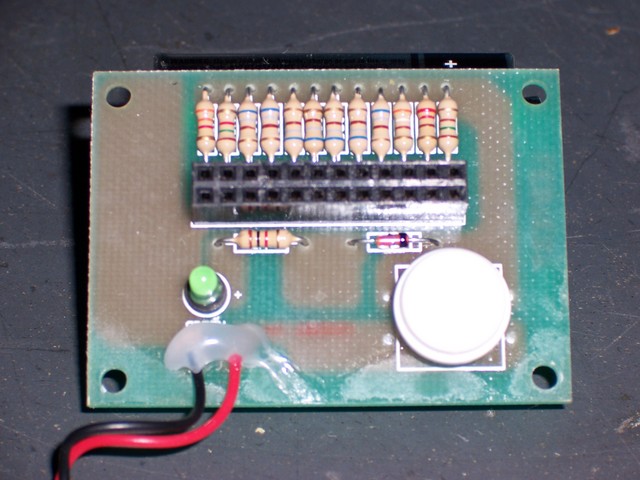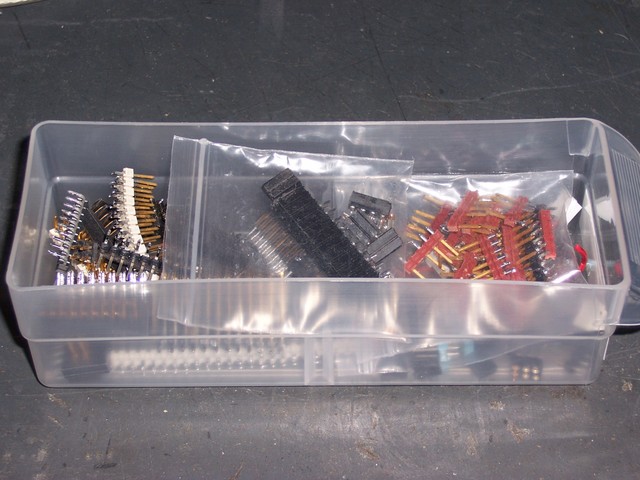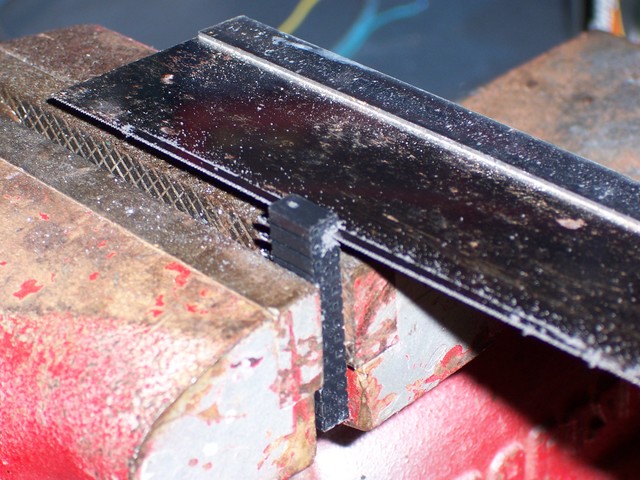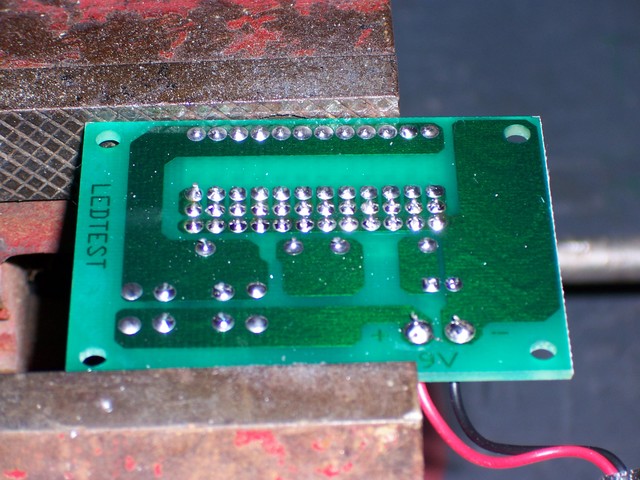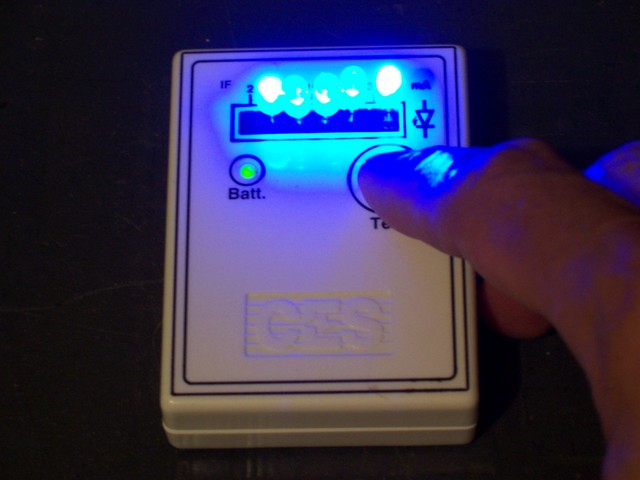I recently bought a $10 LED tester. It has a 9V battery, a dual-row header to put LEDs in, and resistors to provide different test currents to try different LED brightnesses. [Uh, is "brightnesses" a word??? Whatever . . .] You can use it to determine the polarity of an LED if you can’t tell by the case (I’m getting better at visual identification, though), and it’s really handy to figure out what current you want to use while the LED is still out of circuit.
Problem is, the manufacturer used a cheap dual-row connector intended for header pins (probably .037″) that’s way too loose on the smaller pins (probably .028″) on the LEDs, so I get bad connections that make it difficult to use–I pretty much have to hold the LED in place to keep it lit. Also, the socket elements were oriented with the metal on the sides rather than the top and bottom, so bending the LED pins further out didn’t help make any better contact.
Tuesday night I fixed that problem by replacing the original header with a better one from my parts bin.
I started with a salvaged header that I desoldered from a printer control board a while back. The header was too long (too many pins), so I cut it to size with a razor saw. These headers are actually really nice to cut; because although they’re not snappable (I don’t see how that could work with a dual-row connector), they’re notched between every set of pins, so there’s a groove in which to start cutting.
I desoldered the original header from the board with solder wick and the temperature turned all the way up on my new Weller iron. It actually worked pretty well, partly because the board’s plated through-holes were way oversized, so the solder came right out. But I’ve had trouble desoldering things like this before, where the holes are the size they should be and the capillary action just doesn’t pull all the solder out into the wick. Partly spurred by my good luck on this project, I’m starting to do a little research on buying a decent vacuum-powered desoldering station (secondhand, of course).
I soldered the new header in place, tested operation, and reassembled the case. It works much better now–I have five LEDs inserted in a row for comparision, and they all consistently stay lit.
